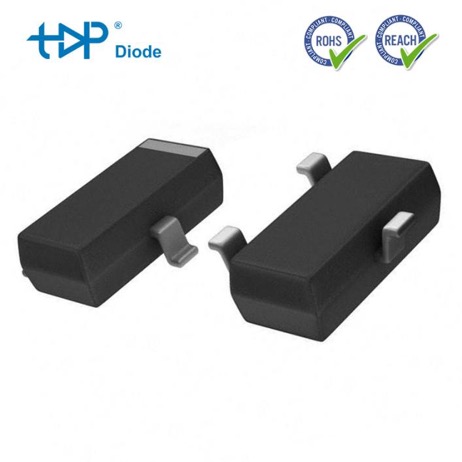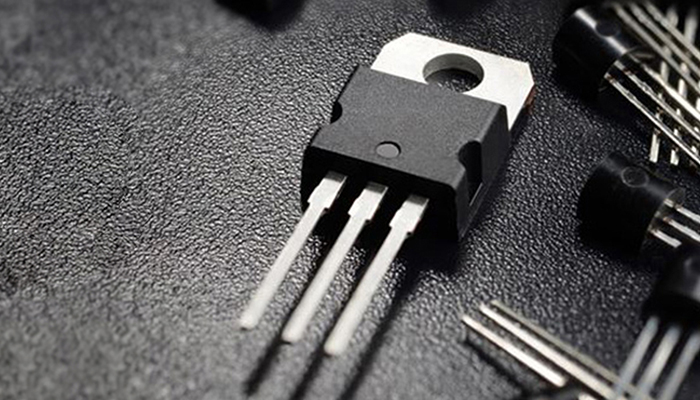MMBT3904: The Unassuming Workhorse of the Electronics World
In the vast landscape of electronic components, few are as ubiquitous and reliably unassuming as the MMBT3904. This small-signal NPN bipolar junction transistor (BJT), packaged in the incredibly common SOT-23 surface-mount form factor, is a true staple on countless circuit boards across the globe. While it might not boast cutting-edge specifications for ultra-high-frequency or power applications, its enduring popularity speaks volumes about its fundamental utility and versatility.

What is the MMBT3904?
At its core, the MMBT3904 is a general-purpose NPN transistor. Its key characteristics define its sweet spot:
* Voltage Rating: Collector-Emitter Voltage (V<sub>CEO</sub>) of 40V and Collector-Base Voltage (V<sub>CBO</sub>) of 60V. This makes it suitable for a wide range of low-to-moderate voltage circuits (e.g., 5V, 12V, 24V systems).
* Current Handling: A continuous Collector Current (I<sub>C</sub>) rating of 200mA allows it to drive LEDs, small relays, or act as a buffer/switch for many common digital ICs and sensors.
* Gain: Its DC Current Gain (h<sub>FE</sub>) typically ranges from 100 to 300 at moderate currents (e.g., 10mA), providing decent amplification capability.
* Speed: While not designed for RF, its transition frequency (f<sub>T</sub>) around 300 MHz allows it to handle switching speeds fast enough for many digital logic interfaces, audio pre-amplification stages, and general-purpose signal switching.
* Package: The SOT-23 package is tiny, inexpensive, and easily automated for mass production. This is a major factor in its widespread adoption.
Why is it So Popular?
- Cost-Effectiveness: The MMBT3904 is incredibly inexpensive, often costing mere cents even in small quantities. This makes it the go-to choice where basic transistor functionality is needed without breaking the budget.
- Availability: It’s manufactured by virtually every major semiconductor company (ON Semiconductor, Diodes Inc., Nexperia, STMicroelectronics, etc.) and stocked by distributors worldwide. Finding a replacement or sourcing large volumes is rarely a problem.
- Versatility: It fills numerous roles effectively:
* Switching: Driving LEDs, relays (often with a driver transistor), small motors, or acting as a logic level shifter/buffer.
* Amplification: Used in small-signal amplifier stages for audio, sensor interfaces, or basic op-amp buffering.
* Digital Logic Interfaces: Level shifting between microcontrollers operating at different voltages (e.g., 3.3V to 5V).
* Constant Current Sources: Simple circuits for biasing LEDs or sensors.
- Robustness & Predictability: While not indestructible, it’s a well-understood part with predictable characteristics within its operating limits. Its specifications are consistent enough across manufacturers for most general-purpose designs.
A Peek Under the Hood (Metaphorically)
Physically, the SOT-23 package has three tiny pins: the Emitter (E), Base (B), and Collector (C). The pinout is standardised across manufacturers. Internally, it’s a classic NPN BJT structure: a P-doped base region sandwiched between an N-doped emitter and an N-doped collector.
Basic Application Examples
-
LED Driver (Switch):
Vcc (e.g., 5V)
|
[R_limit] (e.g., 220Ω)
|
|—– Collector (C) MMBT3904
| |
LED |
| |
GND Emitter (E)
|
[R_base] (e.g., 4.7kΩ)
|
Control Signal (e.g., from Microcontroller GPIO)
* A logic HIGH signal applied to the Base (via R_base) turns the transistor ON, allowing current to flow from Vcc, through the LED, R_limit, the transistor’s Collector-Emitter path, to GND, lighting the LED. R_base limits the base current.
-
Simple Common-Emitter Amplifier:
Vcc
|
[Rc] (Collector Resistor, e.g., 1kΩ)
|
|—– Output
|
Collector (C) MMBT3904
|
Base (B) —– Input Signal (via coupling capacitor)
|
[Re] (Emitter Resistor, optional for stability)
|
[Rb1] [Rb2] (Base Bias Network)
| |
GND Vcc
“`
* This configuration provides voltage gain. The input signal at the base modulates the larger collector current flowing through Rc, creating an amplified, inverted output signal at the collector.
The Complementary Partner: MMBT3906
No discussion of the MMBT3904 is complete without mentioning its perfect complement: the MMBT3906. This is the PNP version of the transistor, sharing almost identical voltage and current ratings (but opposite polarity). Together, they form the cornerstone of countless push-pull output stages, complementary amplifiers, and level-shifting circuits.
Conclusion: The Enduring Legacy
The MMBT3904 isn’t flashy. It won’t win awards for pushing the boundaries of semiconductor physics. Yet, its combination of adequate performance, extreme affordability, universal availability, and well-understood behavior solidifies its position as an indispensable workhorse. For engineers, hobbyists, and manufacturers alike, having a reel of MMBT3904s (and MMBT3906s) on the shelf is akin to having a trusty screwdriver in a toolbox – a fundamental tool you know you can rely on for countless everyday tasks. It’s a testament to the idea that simplicity, reliability, and cost-effectiveness often triumph in the practical world of electronics design. The MMBT3904 truly is a small component with a massive footprint.
If you want to explore more component,
please visit our website:https://www.topdiodes.com
Or send inquiry to : Luna@topdiode.com



